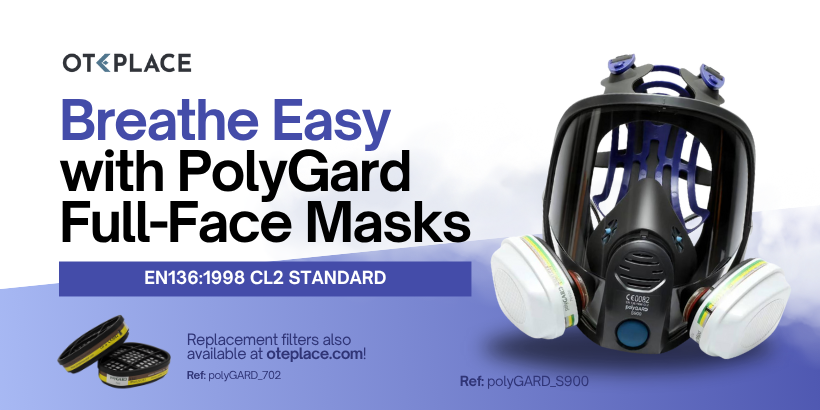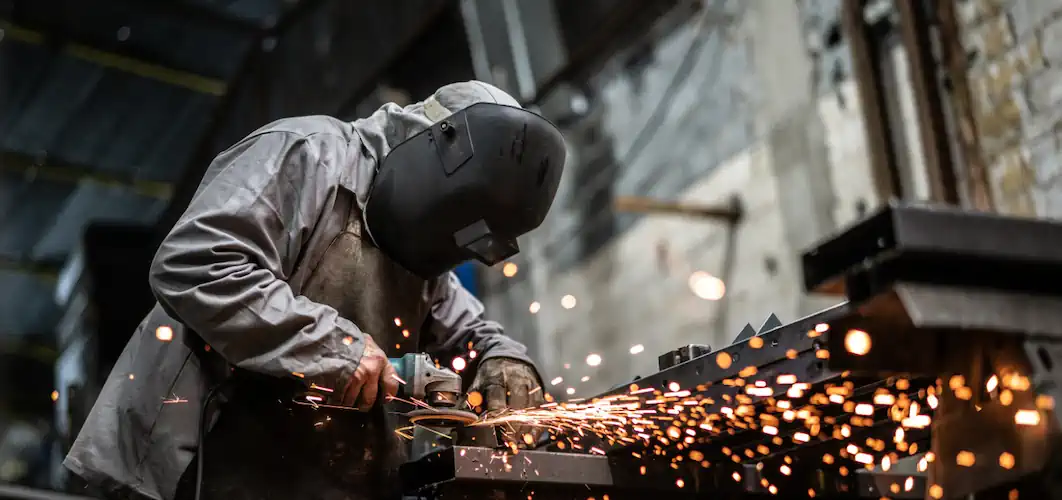Face Shield Safety For Protection In Hazardous Environments
As the safety of workers becomes an increasingly significant concern in hazardous industries, the importance of face shields as a protective measure cannot be overstated. These protective gear not only act as a barrier against hazardous substances but also shield your workers from flying debris, chemicals, and potentially harmful particles.
In this comprehensive guide, we delve into all aspects of face shield safety to equip you with the knowledge you need to safeguard your workforce effectively.

Face Shield Regulations And Standards
When it comes to personal protective equipment, including face shields, it is crucial to adhere to regulations and standards set by regulatory bodies. These regulations ensure that face shields meet specific criteria and provide the necessary level of protection for workers. Complying with these standards ensures that workers are adequately protected and minimizes the risk of accidents or injuries.
In the United States, the Occupational Safety and Health Administration (OSHA) sets the guidelines and regulations for workplace safety. OSHA requires employers to provide suitable face protection for employees exposed to hazards such as flying objects, chemicals, or potential infectious diseases. According to OSHA, face shields should be durable, resistant to chemicals, and capable of protecting the face from impact and liquid splashes.
In addition to OSHA regulations, there are various voluntary consensus standards that manufacturers can adhere to when producing face shields. One such standard is the American National Standards Institute (ANSI) Z87.1 standard. This standard specifies the requirements for eye and face protection devices, including face shields, used in occupational settings. Face shields that comply with the ANSI Z87.1 standard are tested for impact resistance, optical clarity, and chemical resistance, providing a higher level of confidence in their effectiveness.
Types Of Face Shields And Their Features
Face shields come in various types, each designed to meet specific needs and hazards; some even attachable to hard hats. Understanding the different types of face shields and their features can help you choose the most suitable option for your particular work environment.
Full Face Shields
Full-face shields provide the most comprehensive protection, covering the entire face, including the eyes, nose, and mouth. They are typically made of a transparent material, such as polycarbonate or polyethylene terephthalate glycol (PETG), that allows for clear vision while offering impact resistance and protection against chemical hazards. Full-face shields often have an adjustable headband or ratchet suspension system for a secure and comfortable fit.
Visor Face Shields
Visor face shields protect the face from flying debris, chemicals, and other hazards while leaving the eyes and mouth exposed. They consist of a transparent visor that extends from the forehead to below the chin, providing ample coverage for the face. A steel mesh may also be used to provide additional protection against flying debris. Visor face shields are commonly used in industries where workers need to communicate verbally or require an unobstructed vision for their tasks.
Flip-Up Face Shields
Flip-up face shields combine the benefits of full face shields and visor face shields. They feature a transparent visor that can be flipped up when not in use, allowing for easy communication and access to the face. When flipped down, the visor provides full face protection, safeguarding against hazards such as impact and chemical splashes. Flip-up face shields are often preferred in industries where workers need intermittent face protection.
Safety Goggles
Safety goggles and face shields are crucial safety equipment in industries where workers are exposed to various hazards. These protective gears can be made of anti-fog and scratch-resistant materials that may even provide impact protection. They also provide protection to the eyes and face from potential injuries caused by chemicals, sparks, or any other occupational hazards.

Benefits Of Using Face Shields In Hazardous Environments
The use of face shields in hazardous environments offers numerous benefits for both you and your workers. These protective gear provide an additional layer of defense, reducing the risk of injuries and promoting a safer working environment. Here are some of the key benefits of using face shields:
Enhanced Eye Protection
Face shields offer superior eye protection compared to safety glasses or goggles alone. They provide a barrier that prevents hazardous substances, flying objects, and particles from reaching the eyes, reducing the risk of eye injuries. By wearing face shields, your workers can confidently perform their tasks without the fear of eye damage or vision impairment.
Facial Burn Prevention
In industries where workers are exposed to extreme heat, open flames, or sparks, face shields protect the face from burns. The materials used in face shields are often flame-resistant, providing a reliable shield against heat and preventing facial burns. This significantly reduces the risk of disfigurement and ensures your workers can work safely in high-temperature environments.
Protection Against Chemical Splashes
A plastic shield acts as a barrier against chemical splashes, protecting the face and eyes from potential harm. In industries where workers handle hazardous substances or work with corrosive chemicals, these face shields are essential in preventing chemical burns and minimizing the risk of long-term health effects. Plastic shields with chemical-resistant materials offer an additional layer of protection, ensuring the safety of your workers.
Proper Usage And Maintenance Of Face Shields
Using face shields correctly and maintaining them properly is as important as choosing the right shield. Here are some guidelines you can follow to ensure proper maintenance and usage.
Proper Positioning
Position the face shield correctly to ensure maximum protection. The shield should cover the entire face, extending below the chin and wrapping around the sides of the face. Adjust the headband or straps to achieve a snug fit without causing discomfort or pressure points. Make sure the shield doesn’t obstruct vision or interfere with the use of other PPE.
Regular Inspection
Inspect face shields regularly for any signs of damage or wear. Look for cracks, scratches, or discoloration that may compromise the shield's integrity. Replace damaged or worn-out face shields immediately to maintain optimal protection. Regular inspections should be a part of routine safety protocols in your industry.
Cleaning And Disinfection
Proper cleaning and disinfection of face shields are crucial to prevent the buildup of contaminants and ensure clear visibility. Follow the manufacturer's instructions for cleaning and disinfection procedures. Use mild soap or detergent to clean the shield, and avoid using abrasive materials that may scratch the surface. Disinfect the shield with an appropriate disinfectant solution recommended for the material.
Storage And Handling
Store face shields in a clean and dry location away from direct sunlight or extreme temperatures. Avoid stacking or placing heavy objects on top of face shields to prevent deformation or damage. Handle face shields with care to avoid unnecessary scratches or impacts that may compromise their effectiveness.
Replacement Schedule
Face shields have a limited lifespan due to wear and tear. Follow the manufacturer's recommendations or industry guidelines for the replacement schedule of face shields. Regularly replace face shields to ensure optimal protection for workers.
Maintaining face shields properly and using them correctly is essential for their effectiveness in hazardous environments. Incorporate these practices into your face shield safety protocols to enhance workplace safety and protect workers from potential hazards.
Training And Education For Face Shield Usage
Proper training and education on the usage of face shields are crucial to ensure your workers understand the importance of this protective gear and know how to use it correctly. Here are some key points you can consider when providing training:
Standard Operating Procedures
Develop clear standard operating procedures (SOPs) for the usage of face shields in your industry. Include step-by-step instructions on how to properly wear and adjust the face shield, as well as guidelines for cleaning, maintenance, and replacement. Make the SOPs easily accessible to all workers.
Training Programs
Conduct training program to educate your workers on the importance of face shields and their correct usage. Train them on how to choose the right face shield for their specific tasks and environments. Demonstrate proper positioning, adjustment, and removal of face shields. Emphasize the need for regular inspections and maintenance.
Demonstration And Practice
Provide hands-on demonstrations and opportunities for your workers to practice wearing and adjusting face shields. Allow them to ask questions and address any concerns they may have. Encourage open communication and feedback to ensure they feel confident and comfortable using face shields.
Refresher Courses
Schedule periodic refresher courses to reinforce the importance of face shields and update your workers on any changes to SOPs or safety regulations. Keep them informed about new developments in face shield technology or materials that may enhance protection.
Supervision And Compliance
Supervisors and managers should actively monitor and enforce the proper usage of face shields. Regularly inspect your workers' face shields and provide feedback on any issues or non-compliance. Address any concerns or questions raised by them promptly and ensure that they understand the consequences of not using face shields correctly.
Proper training and education play a vital role in ensuring the effective use of face shields in hazardous environments. By providing comprehensive training programs and ongoing support, you can create a safety-conscious workplace where your workers understand the importance of face shields and prioritize their usage.
Investing In Face Shields For A Safer Future
In hazardous work environments, the importance of face shields cannot be overstated. These protective gears act as a crucial barrier against hazardous substances, flying debris, chemicals, and potentially harmful particles. By investing in reliable face shields and ensuring proper usage and maintenance, you can create a safer future for your workers.
When choosing face shields, consider safety standards, material, comfort, visor size and coverage, and compatibility with other PPE. Proper usage involves correct positioning, regular inspections, cleaning and disinfection, appropriate storage and handling, and adhering to replacement schedules. Training and education programs are vital to ensure workers understand the importance of face shields and know how to use them correctly. Invest in face shields today and prioritize the well-being of your workers.















